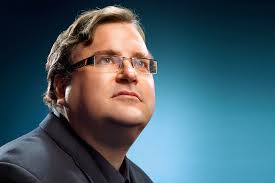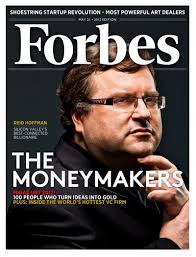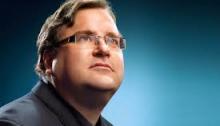“We were going to call it Colleaguester, but that sounded kinda weird.” — Chairman and Co-founder of LinkedIn, Reid Hoffman.
In 2003, Hoffman and his colleagues officially launched LinkedIn, an international social networking site intended to connect professionals around  the world. As an entrepreneur, Reid believed that establishing one’s network is a vital key to succeed in the business world.
the world. As an entrepreneur, Reid believed that establishing one’s network is a vital key to succeed in the business world.
As a student, Hoffman wasn’t that keen on establishing networks with people. He even considered himself a “loner” in his college years with only five friends at most. Clearly, he was not Mr. Popular.
But being a natural visionary, Hoffman wanted to create a ‘new community’ with the use of technology. And so in 1993, he thought of starting up a software company—believing that software was the best medium to reach millions of people in order to accomplish his goal. He laid out his plans carefully and strategically, and was determined to revolutionize the way people interacted online. However, things did not go as smoothly as planned, adversity was a constant companion.
He encountered countless rejections during the time he was looking for initial funding. His lack of professional experience became a major problem when he presented his idea to various capitalists. Potential investors would tell him this: “You probably should go learn how to launch software.”
One thing became clear: Reid needed work experience. He needed a set of mentors, as well as an existing company that would show him how things were being done in the software industry. And so with the right connections, Hoffman became Project Manager of Apple in 1994, where he learned the fundamentals of startups. In 1996, he transferred to Fujitsu, where he was involved in product and business management. His work experiences in these companies became his training grounds in establishing his first company – SocialNet.
Founded in 1997, SocialNet aimed to connect millions of people through online dating. However, Hoffman encountered problems with product distribution strategy. Since the market of online dating is rather crowded, they decided to partner with newspapers, but to no avail. And so in 2000, Hoffman finally shut down the company and left. Nonetheless, this was never reason enough for him to turn away from his vision.
Right after he left SocialNet, Hoffman was tapped by former classmate and founder of PayPal, Peter Thiel. Hoffman became PayPal’s EVP for Business Development, and his main task was to look for people from various industries that could help the company resolve some of its operational problems. Hoffman personally experienced the trouble that one had to undergo in order to connect with people in various industries and sectors. Through this, he was able to come up with his next grand business idea.
Basically, what Reid did was create a digital version of a resume. He developed an electronic overlay of the professional world by placing one’s career details on the Internet. This way, employers and employees alike would have easy access to professional profiles.
In May 2003, Reid, together with some colleagues from SocialNet and PayPal, started LinkedIn. The site became an instant hit as it offered an avenue for professionals and businessmen to build their career portfolio and make it accessible to professionals worldwide. Although most would say that LinkedIn had a smooth start, Hoffman himself thinks otherwise. He said that there were certain underlying issues that made some people unsure of LinkedIn’s potential benefits. “For one, having a professional identity, doesn’t that mean you’re disloyal to your company? You’re looking for a job? Human-resource departments liked that the platform made finding potential hires easier but didn’t want to lose the talent they had: They would prefer their own employees are completely undiscoverable to the world.”
 Companies were also hesitant in using LinkedIn as a networking tool. In fact, Nokia banned LinkedIn during its early days because of confidentiality reasons. Investment banks also veered away from using LinkedIn because of compliance issues. Then again, these adversities never hindered Hoffman to continue to grow the company.
Companies were also hesitant in using LinkedIn as a networking tool. In fact, Nokia banned LinkedIn during its early days because of confidentiality reasons. Investment banks also veered away from using LinkedIn because of compliance issues. Then again, these adversities never hindered Hoffman to continue to grow the company.
At present, LinkedIn has 332 million members, and this number increasing at a steady rate. It has over 6000 employees with offices in 30 cities worldwide. Looking at these figures, it’s safe to say that Hoffman’s vision was finally realized.
Hoffman’s story of success teaches us one basic thing: Never stop pursuing your ideas. Despite all the rejections and challenges he had to endure, he carried on. He had a vision. One that must be pursued no matter how much struggle he had to overcome.
Sources:
https://medium.com/@greylockvc/reid-hoffman-on-naming-linkedin-1fdd526ab7c3
http://money.cnn.com/2009/06/02/smallbusiness/linkedin_startup_story.smb/
http://www.ted.me/the-history-of-linkedin/
http://www.wired.com/2012/03/ff_hoffman/all/
http://press.linkedin.com/about

